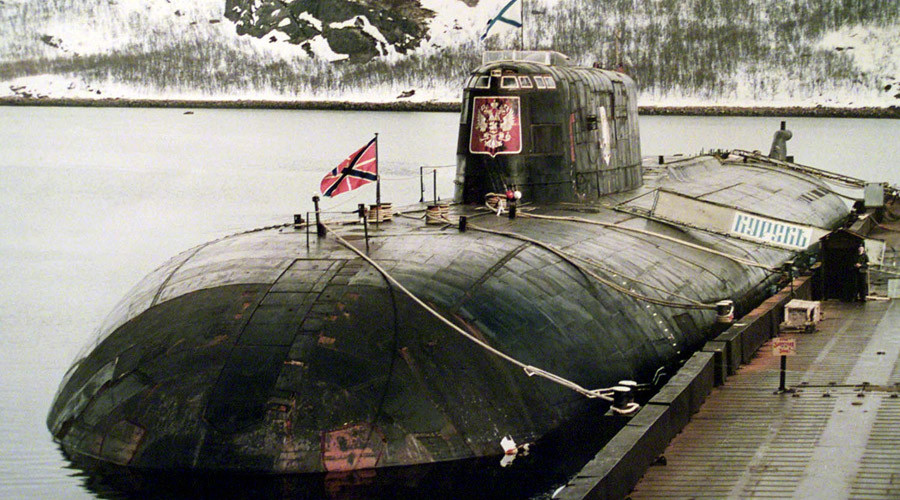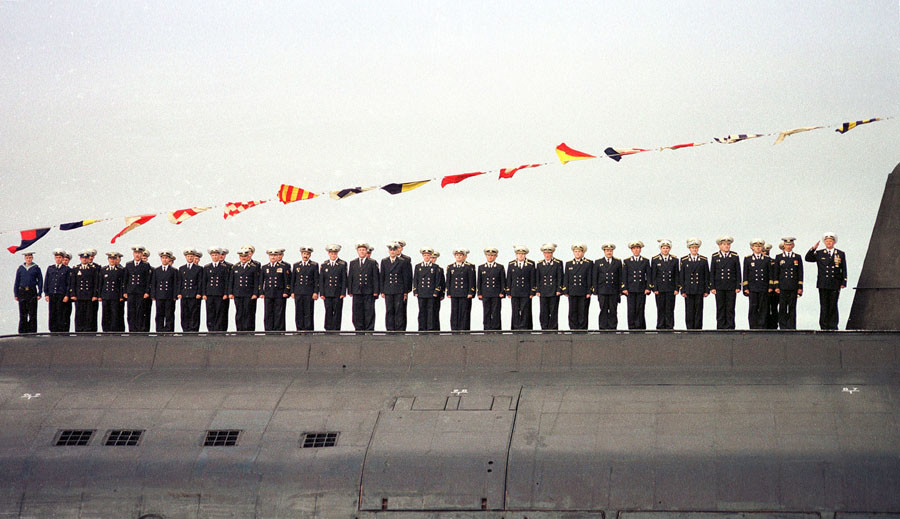One Step Ahead in the Dark, Cold Deep
"If you have a Russian nuclear attack submarine wandering around the Med, you want to track it."
Dmitry Gorenburg, Center for Naval Analysis, Washington
"We are not quite back in a Cold War. But I sure can see one from where we are standing."
James G. Stavridis, former supreme allied commander, NATO

Now that the 2000 Russian Oscar-class nuclear submarine tragedy with the loss of life of all aboard is history followed by Russia's suspended submarine force action, a new era has dawned. Confidence has been restored in the Russian submarine fleet, the memory of the horror of the loss of 118 sailors and officers, most of whom were under 30 years of age, has dimmed in memory.

A new day has dawned, and Russia has a new fleet of attack submarines, all of which mean potential business if and when they are called upon. At the present time they prowl the coastlines of Scandinavia and Scotland, the Mediterranean Sea and the North Atlantic. And in so doing they are making Western military officials quite nervously perturbed. At their obvious aim to contest U.S. and NATO dominance of the dark deep.
The U.S. Navy's top commander, Admiral Mark Ferguson, has stated the intensity of those submarine patrols were up fifty percent over the past year. That statement relies on remarks by the Russian Navy chief, Admiral Viktor Chirkov. The Russian government has spent billions on new classes of diesel and nuclear-powered attack submarines, quieter and bristling with arms. This is a situation that obviously bespeaks a rivalry and military increase echoing the Cold War.
American military officials interpret Moscow's increase in its nuclear arsenal and cyberwarfare capabilities as an effort to prove indisputably Russia's importance on the world stage as a military power following on years of decline and retrenchment. And just as Moscow has used its view of American and NATO arms buildup to justify its own increased vigilance and presence, so too now is the U.S. Defense Department using the increased Russian patrols as reason for increased budgets for submarines and antisubmarine warfare.
A proposal of $8.1-billion over five years for "undersea capabilities" that would include nine new Virginia-class attack submarines to carry up to 40 Tomahawk cruise missiles has been fielded by the U.S. Defense Department. Russia currently boasts roughly 45 attack submarines; two dozen nuclear-powered, 20 diesel, designed to sink other submarines or ships, collect intelligence and conduct patrols.
According to Western naval analysts about half of that number are able to deploy though most remain close to home. The U.S. on the other hand, has 53 attack submarines, all nuclear-powered, along with four other nuclear-powered submarines carrying cruise missiles and Special Operations forces. A third of America's attack submarines are deployed at sea on patrol or in training; the balance are in maintenance status.
Technology is developing the capacity to monitor encrypted communications from those Russian submarines as well as new models of remotely controlled or autonomous vessels. Britain, Germany and Norway are procuring new submarines, reflecting their reaction to the Kremlin's show of force in the Baltic, Atlantic and Arctic. Concern is being expressed at the proximity of operation of Russian submarines and spy ships close to the undersea cables carrying global Internet communications.
This is inevitable, needless to say. It is human nature to view enviously what others have and see in them a threat of some kind; power status or military impetus. Each side regarding the other with suspicion; each side determined to match or outdo the other. National pride uppermost in mind. The end product being that the world is moved ever closer to the real risks of accidental catastrophe.
Labels: Armaments, Conflict, NATO, Nuclear Technology, Russia, Threats, United States

<< Home